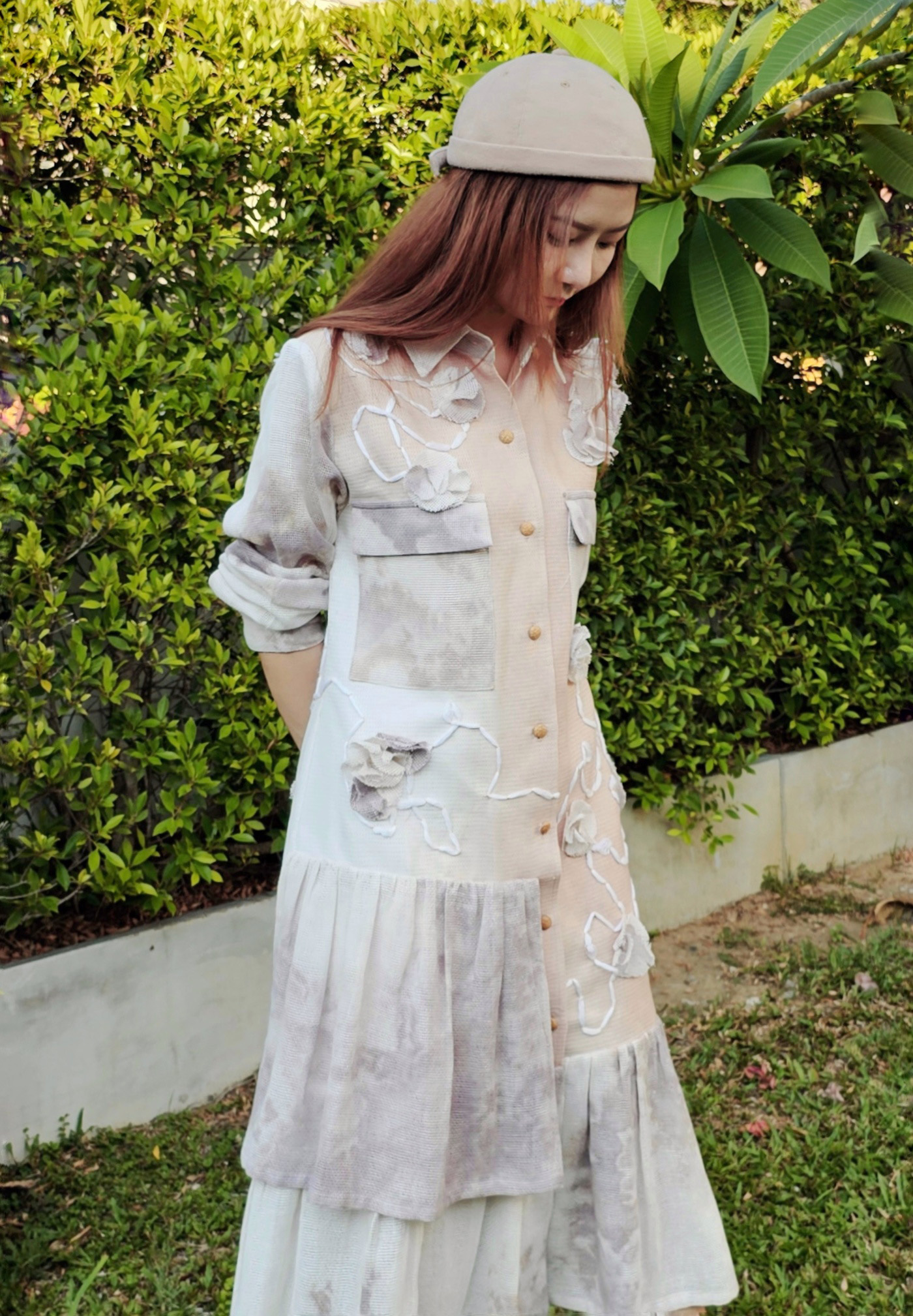
Dr. Chamaiporn Mitinunwong
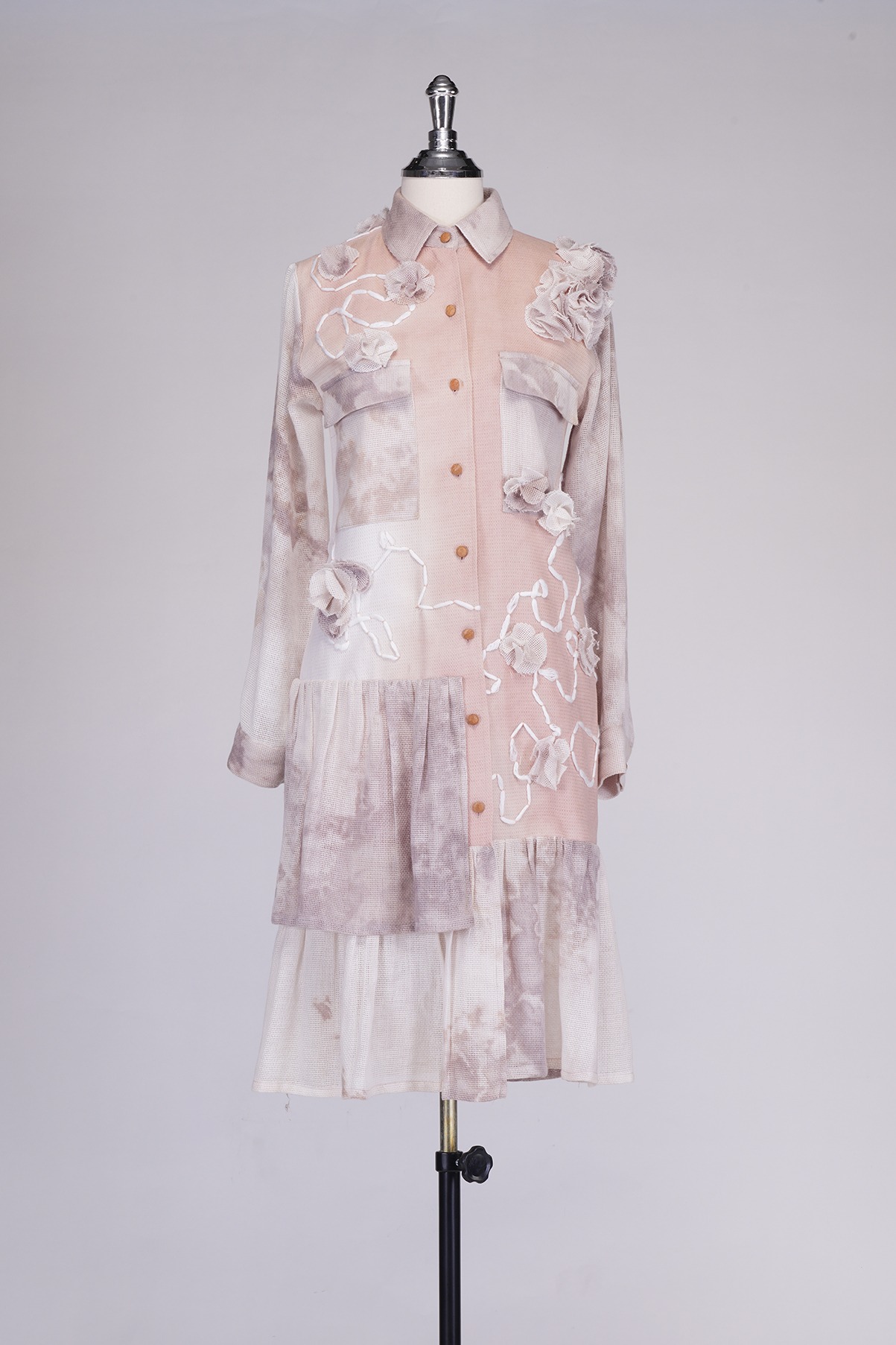
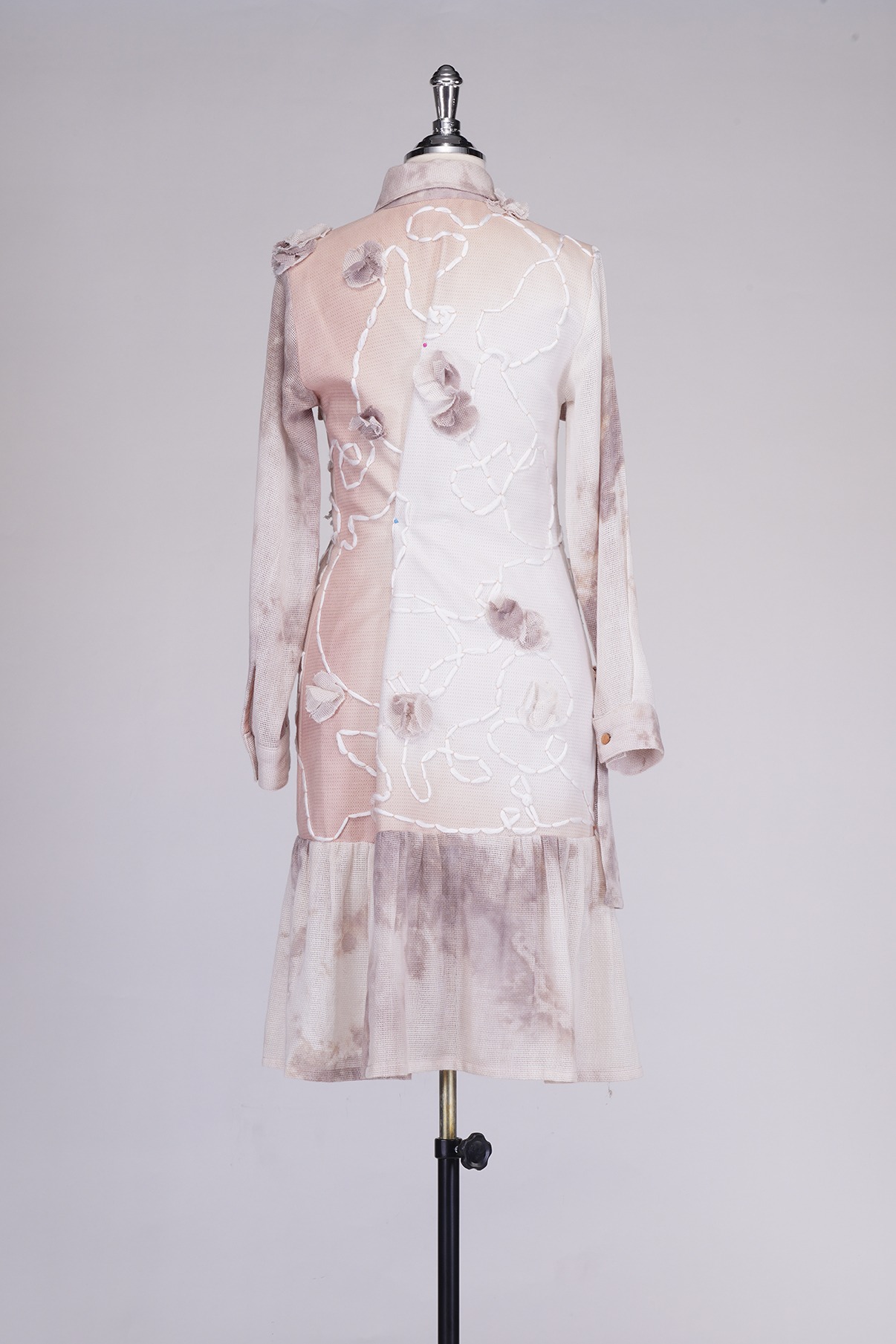
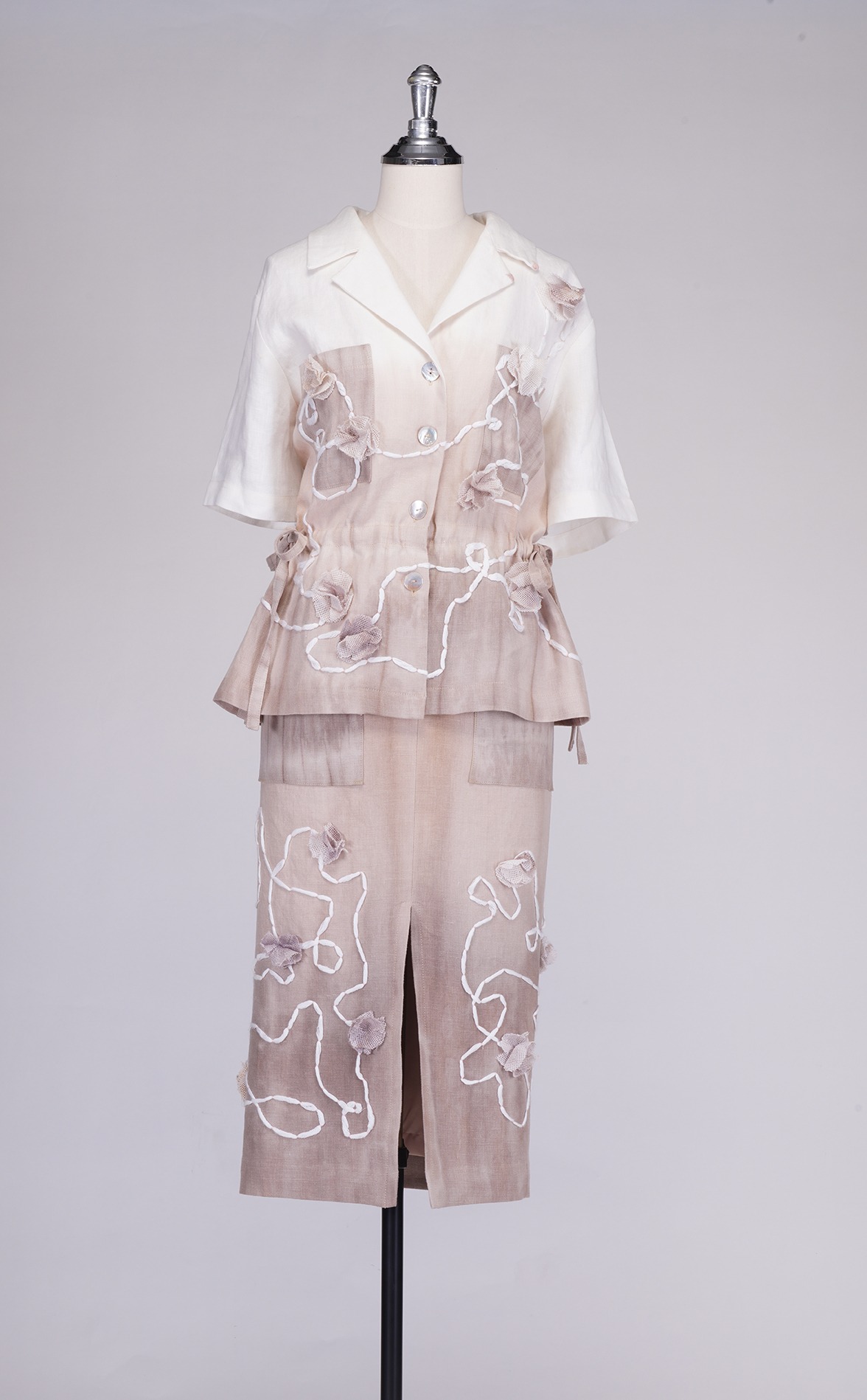
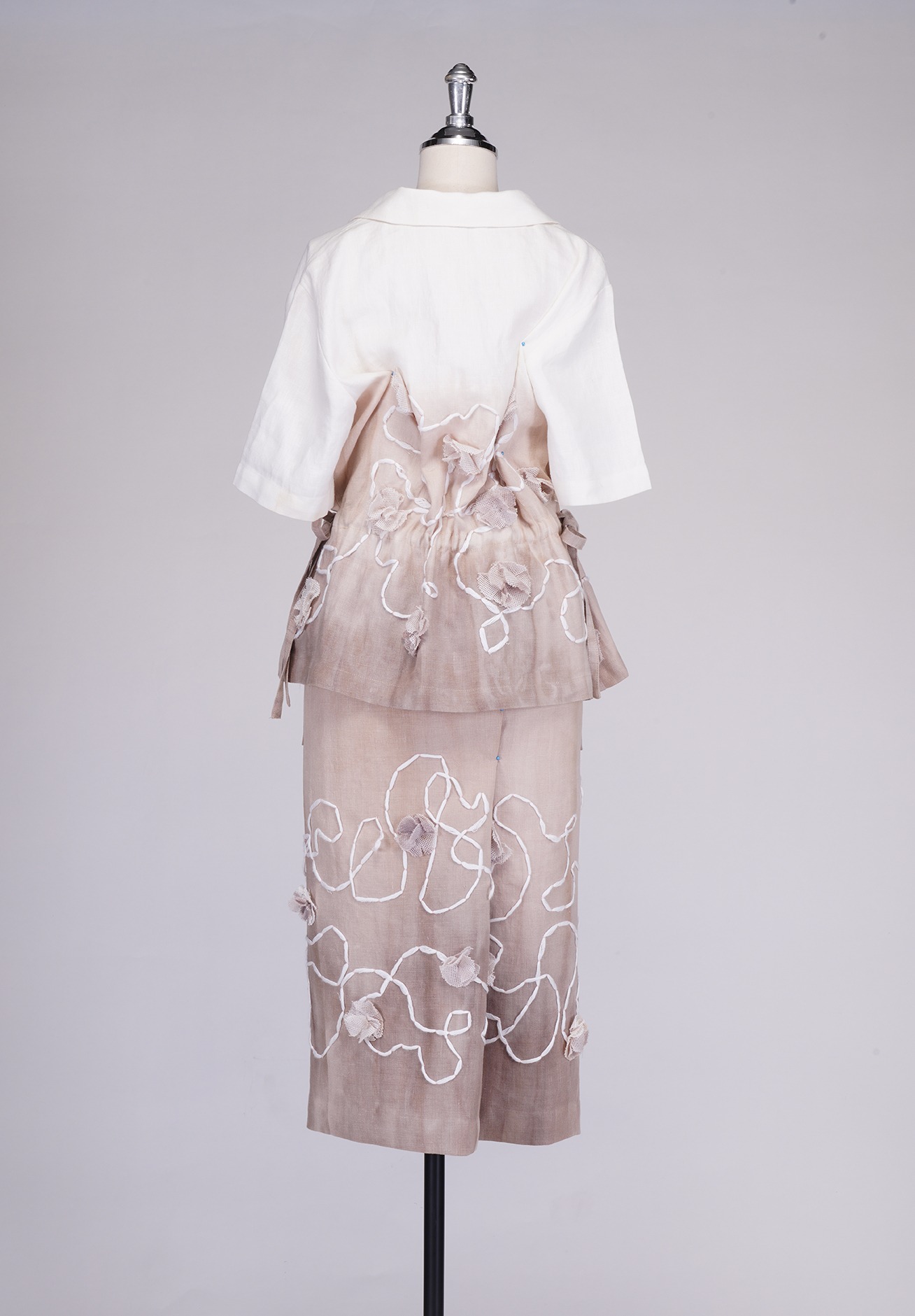
Abstract :
The study aims to design environmentally conscious clothing within the framework of sustainable fashion, targeting working women aged 25-35 with a preference for vintage feminine styles. This endeavor is motivated by the discerning nature of the contemporary urban demographic, which increasingly values and seeks out environmentally friendly attire. Specifically, the focus is on creating summer garments through the utilization of tie-dye techniques with natural dyes, resulting in an array of warm and earthy tones. The incorporation of coloring agents enables the manipulation of color tones to achieve a more exotic and engaging aesthetic, thereby expanding the spectrum of natural color options available in the Thai market. The research methodology is structured into three distinct phases. Firstly, Phase 1 involves the compilation of information on the principles of sustainable and ethical fashion. Subsequently, Phase 2 entails the collection of data concerning the target demographic: women aged 25-35 in Bangkok who demonstrate an affinity for handicrafts and exhibit a preference for natural-colored attire. Finally, Part 3 encompasses experimental activities and the synthesis of findings. The research findings underscore that garments featuring natural fragrances and earthy tones, including variations of yellow, brown, pink, and purple, can be produced in numerous shades. By employing an acidic color-fixing agent such as alum, a brighter tone can be achieved, while the use of lime can intensify the color tone. Fashion styles that resonate with Generation Y individuals encompass casual business, relaxed, and outdoorsy aesthetics. The integration of hand embroidery techniques adds depth and intricate patterns to the fabric, which predominantly comprises 100% natural fibers like linen and lightweight, sheer woven cotton, promoting optimal ventilation. Innovative techniques like line stitching and floral embroidery are introduced to highlight craftsmanship, simplicity, and local essence within the garments.
Keywords: ethical fashion, sustainable fashion, embroidery, natural tie-dye, craftsmanship
Objectives :
The concept of sustainable fashion may initially seem paradoxical in an industry characterized by rapid trends and seasonal turnover, but it represents a commitment to longevity and ethical practices within the fashion world. Falling under the umbrella of slow fashion, sustainable fashion aligns with principles of eco-, green-, and ethical fashion, aiming to minimize negative impacts on both the environment and society across the entire lifecycle of a garment. (Nayak, 2023) Conducting insightful research through the Vogue Audience & Sustainable Fashion Tracker, Condé Nast delved into how Vogue readers engage with sustainable fashion, revealing evolving consumer attitudes toward sustainability in the context of fashion consumption. (CERNANSKY, 2021) Gen Y and Gen Z consumers demonstrate varying levels of support for ethical fashion practices, with concerns about greenwashing and a preference for recycled clothing playing pivotal roles in their purchasing decisions. The shift toward sustainable fashion is fueled by mounting concerns over the fashion industry’s environmental footprint, including pollution, deforestation, emissions, and wastage, while also addressing critical ethical issues like worker exploitation and fair labor practices. Driven by an awareness of the industry’s resource depletion and overconsumption patterns, consumers increasingly seek out environmentally conscious alternatives and initiatives such as clothing recycling and upcycling to mitigate the fashion sector’s detrimental impact on the planet. (Lee, 2012) (Pallavi Chaturvedi, 2020) In response to this growing sustainability movement, the trend of natural tie-dye fashion emerges as a sustainable and artistic solution, utilizing organic materials to create vibrant and environmentally friendly patterns on clothing. By harnessing natural dyes sourced from fruits, vegetables, and plants, artisans craft unique pieces using traditional tie-dye techniques passed down through generations. This eco-conscious approach to fashion resonates globally, attracting both foreign and local enthusiasts who prioritize ethical choices in their wardrobe selections. In the bustling city of Bangkok, designers leverage the principles of natural dyeing and intricate hand embroidery to tailor garments for the modern urban professional, blending sophistication with environmental mindfulness. By offering a range of natural tie-dyed apparel in soft, understated hues, these designers cater to the discerning tastes of cosmopolitan consumers seeking stylish yet sustainable wardrobe options. This focus on eco-friendly practices not only resonates with local Thai clientele but also resonates with an international audience, signaling a shift towards more sustainable and ethical fashion choices worldwide.
Conceptual Framework :
Conceptual Framework:
The methodology for this research project is structured around four key components. The first component involves the study and analysis of relevant data, including the theories of sustainable fashion and ethical fashion, the identification of local plants in Thailand that could be used in natural tie-dye processes, exploration of hand embroidery techniques, and data collection from the target working women aged 25-35 in Bangkok.
The second component focuses on the study and analysis of techniques, styles, materials, and processes. This includes exploring various tie-dye techniques, experimenting with tie-dye of natural colors and mordants, and mastering embroidery techniques such as line stitching and layering flower embroidery to enhance the design.
The third component involves experimentation, where natural color extraction, Shibori dyeing, and embroidery decoration techniques will be tested and refined to achieve the desired aesthetic and sustainability goals. This phase aims to innovate and develop unique design elements that resonate with the target audience.
Finally, the project will conclude with the development of the prototype, incorporating the insights and findings from the research and experimentation phases. The prototype will embody sustainable and ethical fashion principles while meeting the specific needs and preferences of working women in Bangkok. Furthermore, the project will emphasize the importance of publicizing the prototype to raise awareness and promote sustainable and ethical fashion practices in the industry.
Process / Methodology :
Process or Concept / Methodology:
1. The study and analysis of relevant data
1.1 The Theories of sustainable fashion and ethical fashion
1.2 Local plants in Thailand that could be used in natural tie-dye.
1.3 Hand embroidery techniques
1.4 Data collection from the target working women aged 25-35 in Bangkok
2. The study and analysis of techniques, styles, materials, and process
2.1 Tie-dye techniques
2.2 Tie-dye of natural colors and mordants
2.3 Embroidery techniques such as line stitching and layering flower embroidery
3. Experiment
3.1 Experiment with natural color extraction
3.2 Experiment Shibori dyeing.
3.3 Experiment with embroidery decoration techniques
4. Conclusion and the development of the prototype
5. Publicity
Techniques and Materials :
Techniques and process
Part 1: Making natural colored fabric using the Natural tie-dye technique.
- Preparing the fabric: Bring linen and cotton fabric to a boil and peel off the starch and dirt.
- Linen cloth tied together in a pattern and dyed the straw core the first time. Later, some alum was added to adjust the color tone of the fabric.
- Cotton fabric is cooled and dyed with ice. By dropping it in straw-colored water and butterfly pea flower-colored water mixed.
- Leave all clothes to dry overnight.
- Take linen that has been dyed with straw core and dye it a second time with straw core for 1 hour, then add rust water to adjust the color tone of the fabric.
- Take the dried cloth and wash it with water until clean and then dry it in the windy shade.
Path 2: Take tie-dye fabric to cut sample outfits, divided into 1 set of safari-style shirts and gradient skirts, and 1 set of safari dresses.
Part 3: decorated with hand embroidery using yarn. And use the remaining cotton to embroider a bouquet.
Materials
- 100% white linen and white sheer woven cotton.
- Plants that give natural color include fang kernels and butterfly pea flowers.
- Mordants include rust water, alum water, and lime water.
- Equipment for making tie-dye
- Equipment for embroidery includes white yarn, embroidery floss, and a hoop.
Result / Conclusion :
Through detailed experimentation with natural dyeing processes such as Sappanwood tie-dye, butterfly pea coloration, and rust water applications, a nuanced understanding of color transformations on various fabrics has been gained. The careful balance of additional coloring aids, alum, and quicklime played a crucial role in achieving and intensifying the desired light pink and lavender purple hues, showcasing the intricate artistry involved in natural dye techniques. Furthermore, the innovative use of ice dyeing and Fang core in subsequent dyeing processes unveiled a breadth of color possibilities and highlighted the adaptability of these methods in creating unique and visually striking effects on the fabric. The transformative impact of rust water on cotton, leading to rich earth-tone browns, underscored the artistry and precision required in dye application to achieve desired outcomes. In terms of fabric manipulation, the significance of fabric thickness, particularly in linen fabric with a weight of 280 gsm, was observed to impact the sharpness and definition of tied patterns. Insights into the importance of tightly compressing the fabric or opting for thinner materials to enhance pattern clarity were identified, illuminating the meticulous attention to detail essential in achieving intricately designed textiles.
Moreover, the integration of embroidery, line stitching, and layered floral embellishments in garment design not only added visual depth but also evoked a nostalgic vintage charm and feminine allure. The fusion of safari suit styles with retro elements, including pink and purple hues, ruffles, and floral accents, further enhanced the timeless elegance and versatility of the outfits, making them ideal for effortless and chic casual wear. Overall, the utilization of natural fibers ensured both comfort and adaptability in mixing and matching options, emphasizing the relevance and appeal of these techniques in creating distinctive and stylish ensembles for leisurely occasions.
References :
CERNANSKY, R. (2021, August 5). Vouge business. Retrieved from SUSTAINABILITY: https://www.voguebusiness.com/sustainability/customers-care-more-about-sustainability-post-lockdowns-now-what
Lee, J. H.‐H. (2012). Young Generation Y consumers’ perceptions of sustainability in the apparel industry. Journal of Fashion Marketing and Management, 477-491.
Nayak, S. R. (2023). Marketing Sustainable Fashion: Trends and Future Directions. Sustainability 2023.
Pallavi Chaturvedi, K. K. (2020). Investigating the determinants of behavioral intentions of Generation Z for recycled clothing: an evidence from a developing economy. young consume, 403-417.